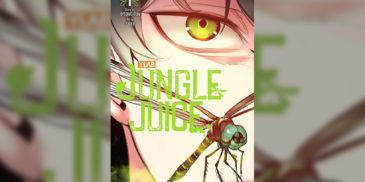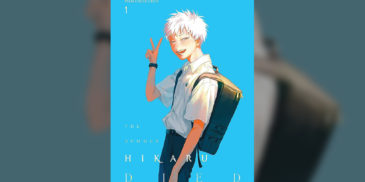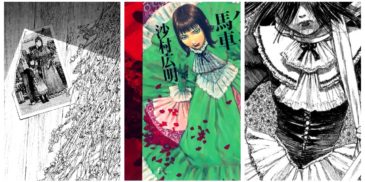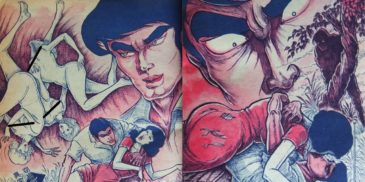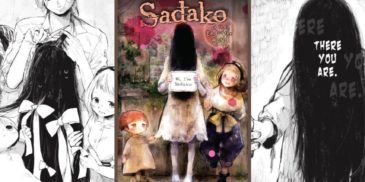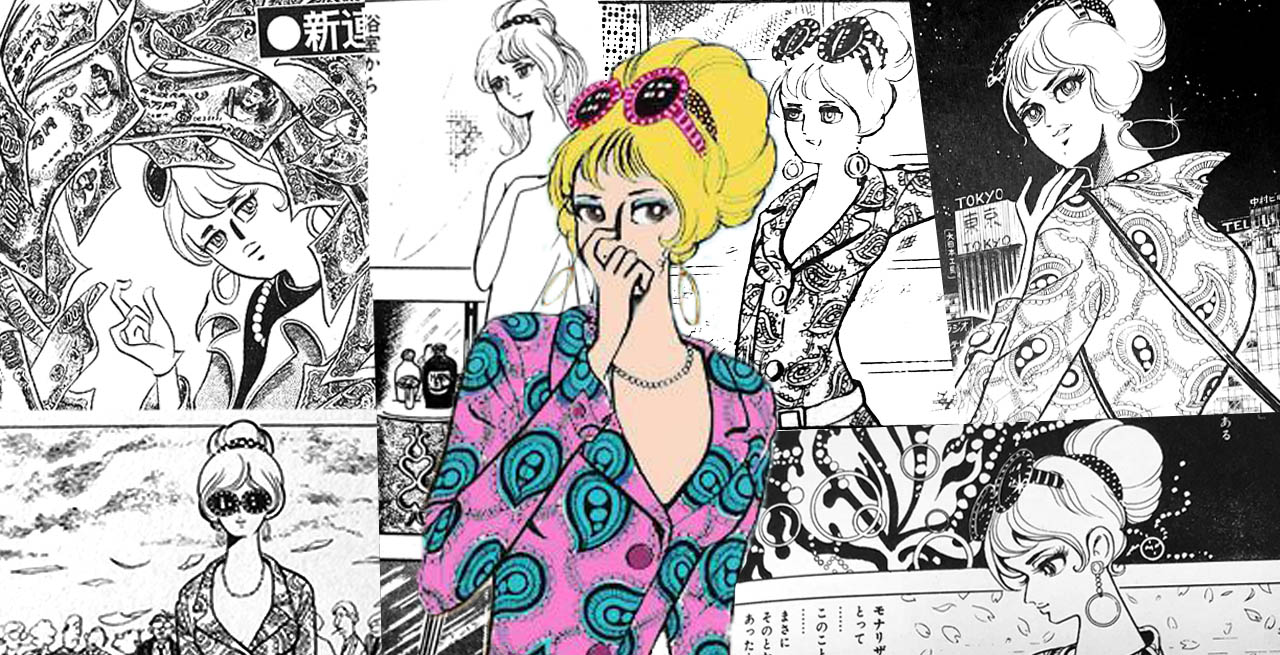
Still receiving new adaptations to this very day, it is safe to say that Monkey Punch’s seminal manga Lupin III is one of the most enduring properties in the world of manga and animé. Originally beginning serialisation in 1967 in Weekly Manga Action, Lupin III’s success was almost immediate and was instrumental in making Weekly Manga Action one of the most popular periodical manga magazines nationwide. With its fresh “action-comedy” genre, Lupin III brought an infectious sense of fun and zaniness into the typically self-serious world of adult gekiga. As such, many contemporaries of Monkey Punch in this late 60s/early 70s period were heavily influenced by this style, and went on to great success of their own. From direct copycat works to more subtle interpretations, Lupin III’s DNA is firmly spread throughout all the most popular manga from this period. One of the more interesting and unique works among these would be Mona Lisa Okyo by Teruo Tanaka.
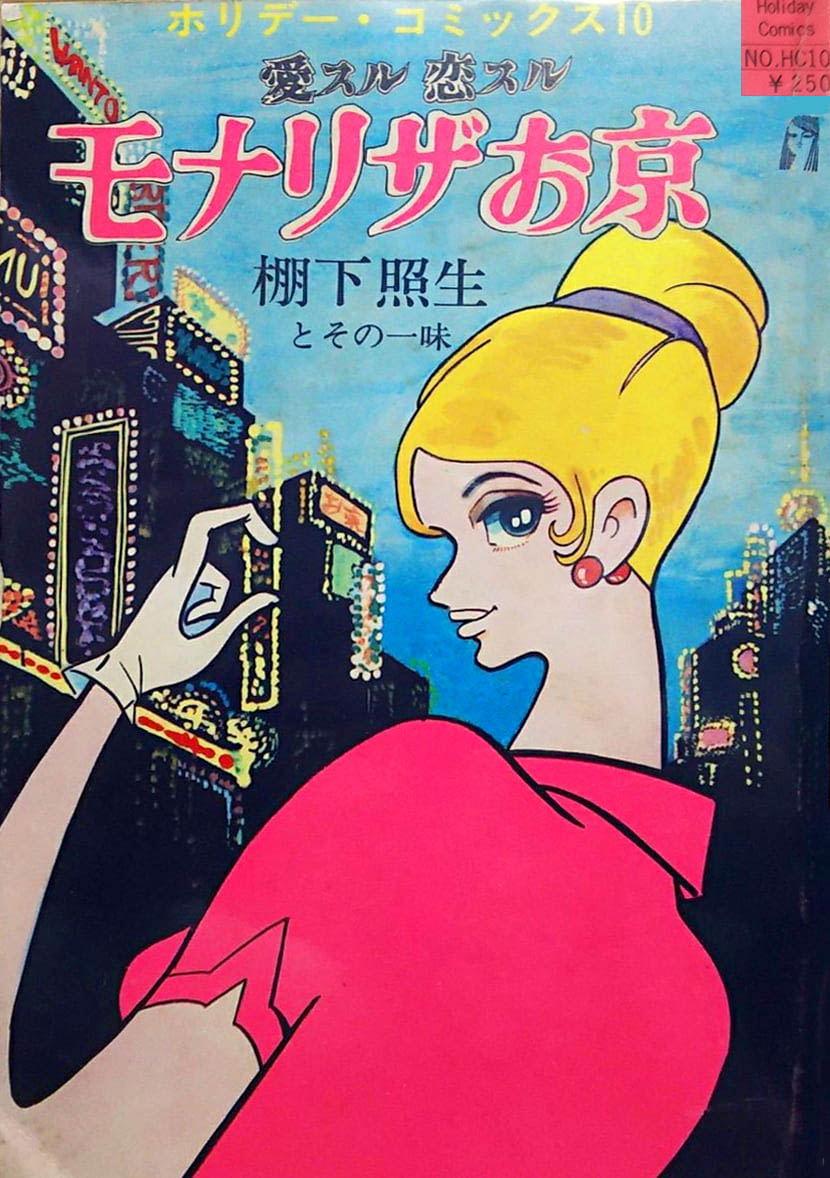
Unlike most other popular manga of the day, Mona Lisa Okyo wasn’t published in a dedicated manga magazine. Instead, it was serialised from February to December 1970 in Young Lady: a fashion-centric magazine firmly aimed at 18-30-year-old women. Without wanting to delve into the topic of gender stereotypes too much, I tracked down a copy of Young Lady from 1970, and it is safe to say that there is little to no content that would be of interest to your typical 1970s Japanese boy or man; the magazine is also not aimed at a shojo audience either, with adverts for smoking paraphernalia interspersed between those for cosmetics and confectionery. With such a limited demographic and a serialisation run that didn’t even last an entire year, it is a testament to Mona Lisa Okyo’s quality that it saw wider success. Not only did Holiday Comics publish a book collecting the first three stories, but Mona Lisa Okyo would also receive a live-action film adaptation in 1971 courtesy of Daiei, with one of Japan’s top stars at the time, Mari Atsumi, in the lead role.
Admittedly, it feels a little reductive to refer to Mona Lisa Okyo as “the female Lupin III”, though the intention of this title is more in reference to its audience, rather than the character of Okyo herself (though Okyo is a female thief). Simply put, Mona Lisa Okyo is an equivalent of Lupin III, tailor-made to appeal first and foremost to young women. Naturally, women’s taste in manga is going to be different from men’s, meaning that Teruo Tanaka’s own take on the action-comedy genre differed widely from that seen in the works of Monkey Punch and his male-orientated contemporaries. Mona Lisa Okyo is also unique in being one of the only josei manga to attempt to take on this style.
Mona Lisa Okyo’s title off the bat tells us everything we need to know about our protagonist: “Mona Lisa” was a fashionable nickname at the time to call a beautiful woman, and Okyo is a shortened version of the name Kyoko – commonly used by delinquents. The titular Okyo is a highly skilled and successful pickpocket who lives a life of luxury in her ultra-exclusive and expensive penthouse hotel suite. Just like Lupin III, every good thief needs an arch nemesis, and this comes in the form of a detective known simply as “Big Beard”. Big Beard is a somewhat bumbling mix of The Pink Panther’s Inspector Clouseau and Lupin’s Inspector Zenigata and has dedicated himself to catching Okyo. He knows full well that Okyo is a pickpocket, but she is just too good for him to ever get any evidence of this fact. Complicating things further, he is also hopelessly in love with Okyo and often becomes too flustered in her presence to make any meaningful attempt to catch her out. It is a fun dynamic that the two characters have, and it is clear that Big Beard doesn’t want to actually punish Okyo, he just wants her to live a more honest life.
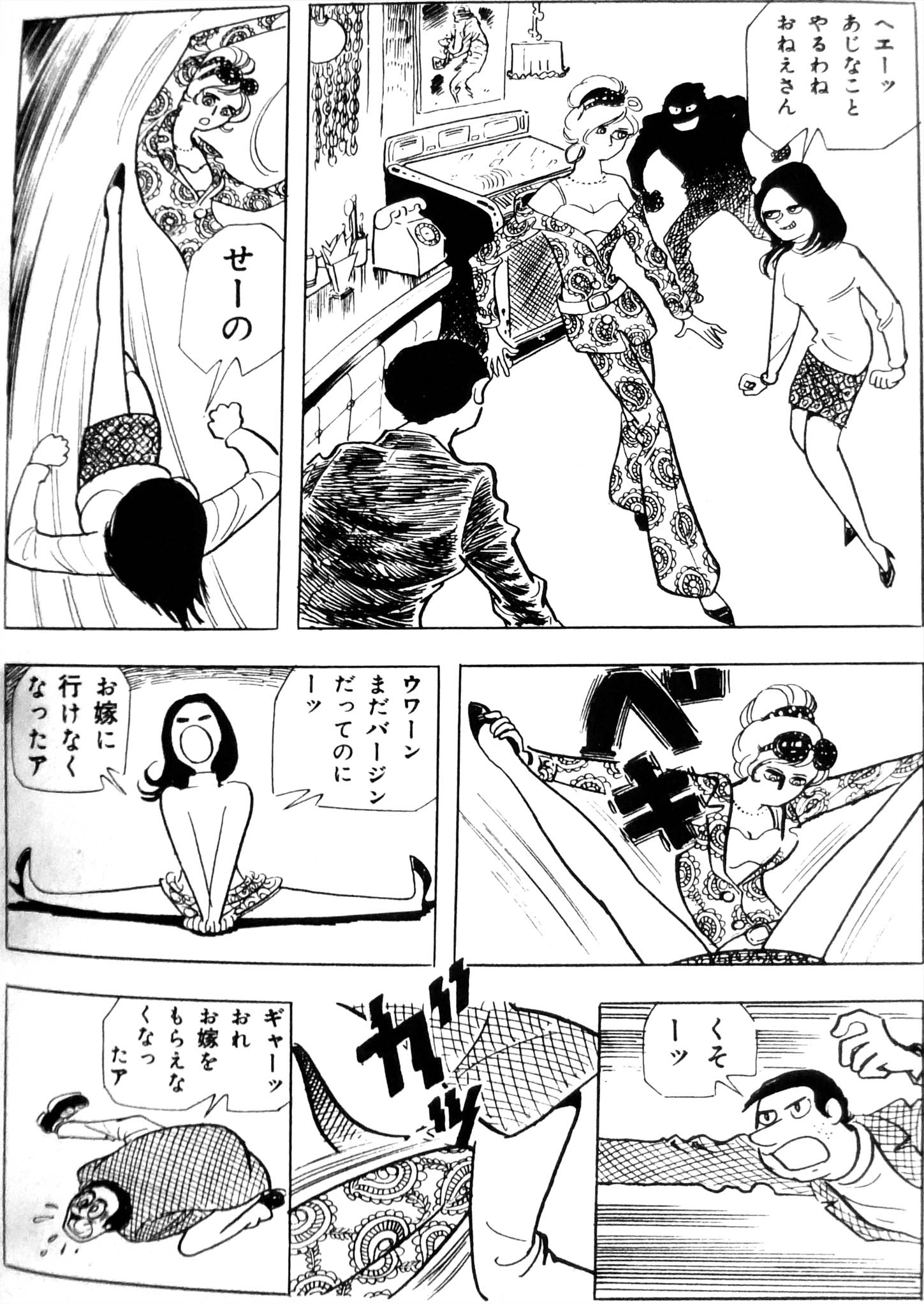
The first story in Holiday Comics’ book introduces us to Okyo and has her meeting a young street urchin who is being pursued by the police after being caught pickpocketing. Taking pity on the boy, she covers for him and lets him move in with her until he gets back on his feet. Okyo is keen to pass her experienced wisdom in both surviving the streets and thievery onto the boy so that he can better fend for himself. Despite her kindness, the boy bites the hand that feeds him and steals Okyo’s purse before breaking her number 1 rule of survival by splashing his ill-gotten cash around. When he goes to a sleazy bar and buys the services of a whole group of glamorous hostesses to show off, he quickly draws the wrong kind of attention. Okyo, learning of the reputation beginning to surround him, quickly runs to save the boy who has got involved in a fight, but she is too late and he ends up getting stabbed by a bottle before dying in her arms.
Already from this first story, we are greeted with the very unique themes present in Mona Lisa Okyo. Despite the surface level of common comedic hijinks that come with the action-comedy genre, there is a surprising level of grit and tragedy to be found. The lifestyle of a thief may seem like glamorous fun and games at first glance, but Mona Lisa Okyo makes it very clear that the manga firmly takes place in the real world, with very real consequences.
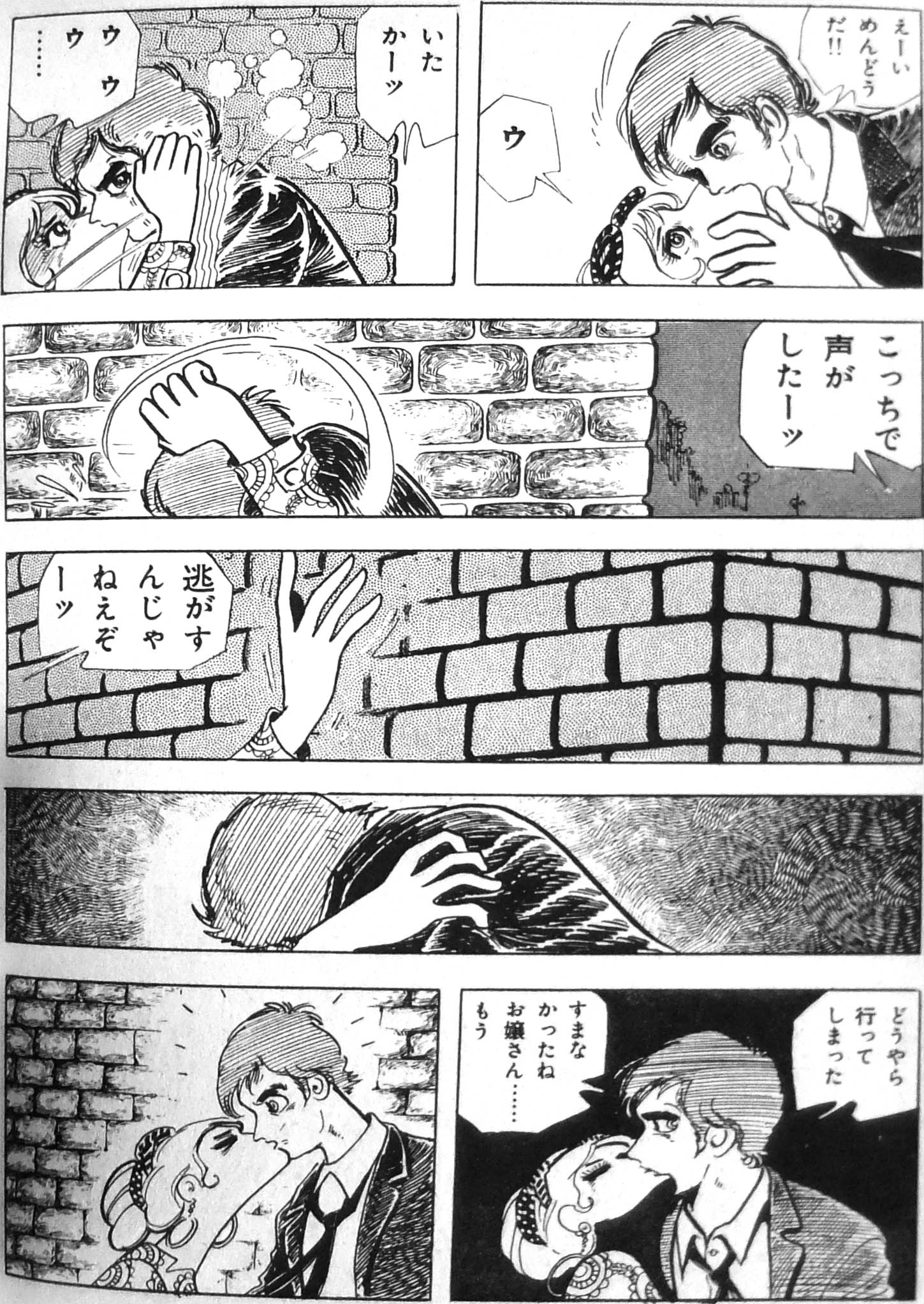
The next story starts with Okyo feeling very sorry for herself. She is walking through the park and sees countless numbers of happy couples enjoying each other’s company. Despite having all the money and luxury possessions she could ever ask for, Okyo’s life in her penthouse suite is a lonely existence. Fortunately for her, love might literally land in her lap when a man runs up to her and kisses her! Have her dreams been answered? Unfortunately for her, the man is injured and running from a particularly nasty group of gangsters; kissing her gives him the opportunity to hide from them. Not one to give up on an opportunity, Okyo cares for the man as he recovers from his injuries with the hope that he might stick around with her. He is no ordinary thief, however, and has stolen a valuable briefcase from a very powerful yakuza gang. Not only are the yakuza after him, but he also has the police on his back, as well as a tenacious duo of reporters looking for the all-important scoop to tackle the yakuza themselves. Whilst Okyo helps him out the best she can, they both agree that it is best for the both of them to go their separate ways.
As with the first story, we once again have a very serious theme running beneath the wacky comedy, which also reveals why Okyo was so keen to help the boy in the first story: she is so very lonely. As a manga aimed solely at a young female audience, Mona Lisa Okyo is free to depict the struggles of everyday women without having to worry about also making itself suitable for a male viewpoint. The character of Okyo is faultlessly authentic, and Teruo Tanaka never shies away from showing her imperfections. Okyo is so much more than lines on paper and feels like a real living, breathing woman. Like the best sitcoms, Mona Lisa Okyo initially hooks the audience with its comedy and action but uses this as a tool to delicately deliver its more powerful and emotional messages. Just like her name, which conjures both innocent beauty along with the personality of a troublemaker, Okyo is a flawed and paradoxical character. On one hand, she is an opportunistic thief who gives no second thought to her victims, on the other, she is charitable and doesn’t think twice about helping those in need. These two sides of her character – the selfish and the selfless – are constantly battling, and the audience can never quite judge which side of Okyo we are seeing. Is she helping the man out of the goodness of her heart, or is she merely doing it out of hope that he will fall in love with her out of gratitude?
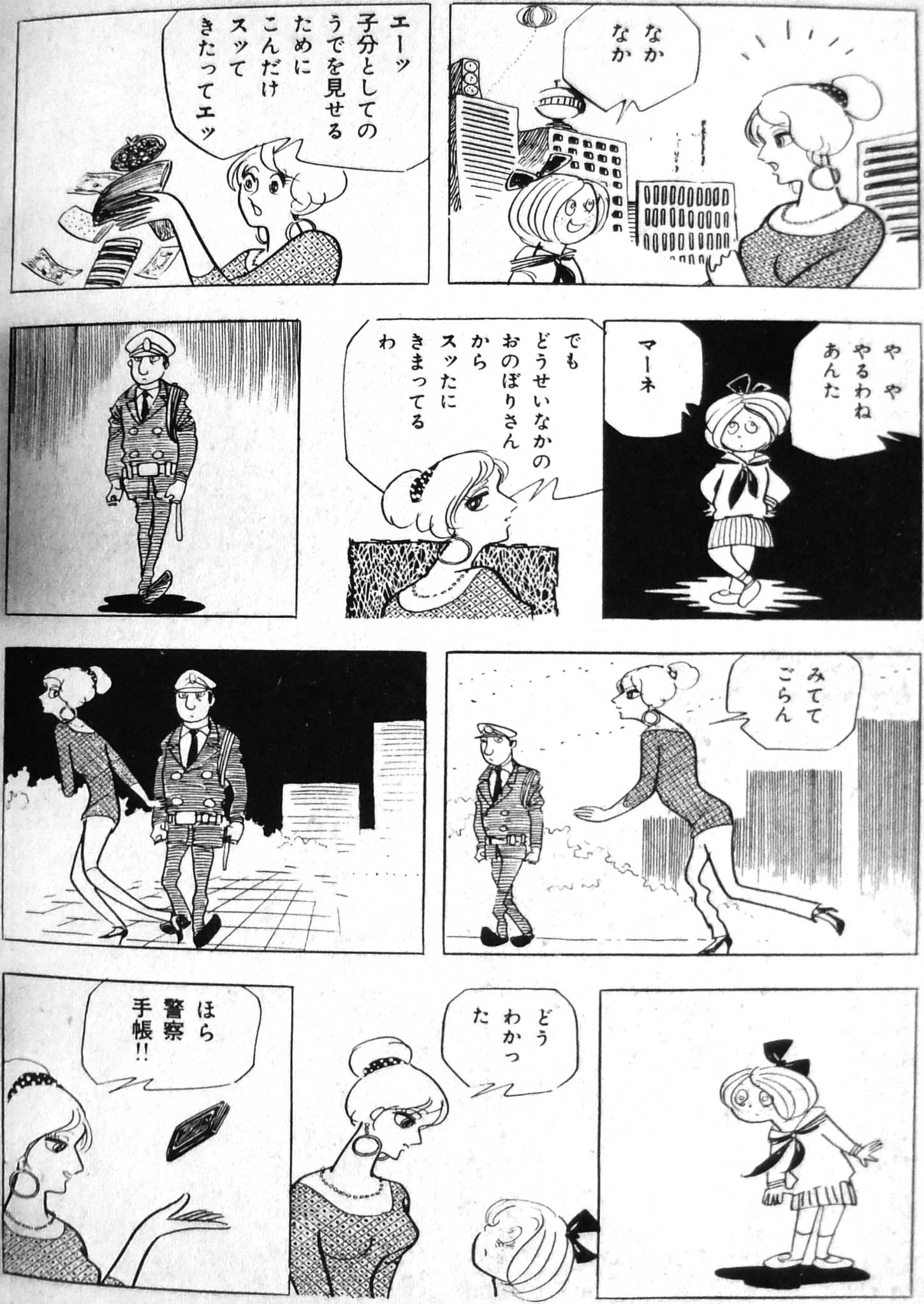
The third and final story in the book introduces us to Gachako, a character who will become Okyo’s sidekick going forward. One day Okyo is awoken to a very loud knocking at her door and is surprised to see a very diminutive little girl standing there in a sailor uniform. Gachako sees herself as a contender for the title of Japan’s most glamorous pickpocket and has run away to the big city in order to challenge Okyo, who she sees as her rival. Okyo is not one to turn down a challenge, but also knows better than to let an 8 year old runaway go around on her own, so begrudgingly takes her into her suite. It is clear that Gachako has never had any form of parental guidance, and she makes Okyo’s life a living hell as she trashes her apartment, kills her goldfish, and even tries to throw herself from the window after Okyo attempts to discipline her. The two women finally have their pickpocketing competition, but are pefectly matched with their own unique skills. As the competition closes with a tie, both Okyo and Gachako end up saving one another from being caught by Detective Big Beard and decide to join forces.
This third story is the most openly comedic of the three and allows Teruo Tanaka to really stretch his legs when it comes to his depictions of physical comedy. Physical comedy has always been a mainstay of Tanaka’s manga, with a fun and fluid art style exaggerating his characters’ movements, often adopting a classic rubber hose aesthetic when needed. Okyo’s character design rarely stays consistent from panel to panel, but this is more of a feature than a drawback, effectively presenting different sides of her character. One minute she can appear like a gorgeous, statuesque supermodel, the next she can be sneaky and devious, and finally, she can look thoroughly goofy; there is always more to Okyo than meets the eye. As well as Okyo, Gachako is a brilliant and devilish addition to the manga’s lineup, and always brings with her some brilliantly expressive and extreme facial expressions.
Mona Lisa Okyo is a unique outlier in the history of both action-comedy manga, as well as Josei manga. Taking the popular styles and themes from manga such as Lupin III, Teruo Tanaka delivers these to a whole new female audience by bringing more grounded and emotional facets to the character of Okyo. The wackiness and exuberance of Lupin are plain to see, though once you scratch beneath the surface, you see that it is masking many of the struggles that young women may face in real life. It is refreshing to see a manga so dedicated to a specific demographic without needing to compromise on its content. It is also not afraid to take risks and never shies away from tackling darker themes despite its overall lighthearted tone.
Overall, the Mona Lisa Okyo manga is very much like the woman herself: a paradoxical mish-mash of tropes and themes which come together to present a funny, but surprisingly hard-hitting, view into the life of a street-wise pickpocket. Okyo is very much a woman’s woman: brave, independent, and beautiful with a keen eye for fashion; though she is not infallible and is an easy character to identify with, with a complex range of emotions hidden behind her glamorous exterior.
More Manga Reviews
What This World is Made Of Vol. 1 (2021) Manga Review – A Highly Kinetic Piece of Work
Note: This review covers Volume 1 What This World is Made Of is a three-volume psychological action mystery manga, written and illustrated by legendary mangaka Shin Yamamoto. Having created a…
Jungle Juice Volume 1 Manhwa Review – A Bugs Life
Jungle Juice Vol. 1 is a sci-fi fantasy manhwa, written by Hyeong Eun and illustrated by Juder. Hyeong Eun has worked as a writer on the webcomic 100 (2020-23), whereas…
The Summer Hiraku Died: Volume 1 (2023) Manga Review – Uncanny Valley
The Summer Hikaru Died is an ongoing (currently at 4-volumes) slice of life/horror Seinen manga, written and illustrated by Mokumokuren. First conceived while Mokumokuren was studying for his exams, the…
Bradherley’s Coach (2005) Manga Review: Where Dreams Go to Die
Ero-guro manga is often known for telling stories in the bleakest way possible. Among all the blood, violence, and adult content, it is hard to find any hope for the…
Indecent Wriggling (1970) Manga Analysis – A Perverse Gender-Bending Body Horror
Noboru Yoshimi was a prolific horror manga author who enjoyed great success with over 300 published stories to his name, mainly aimed at a younger audience. There is however one…
Sadako at the End of the World Manga Review – Like a Ray of Hope During the Apocalypse
Sadako at the End of the World balances delicately between a cute slice-of-life story and a new entry into the Ring franchise that holds up as true canon. Featuring supervision…

Hi, I have a borderline obsession with Japanese showa-era culture with much of my free time spent either consuming or researching said culture. Apparently I’m now writing about it as well to share all the useless knowledge I have acquired after countless hours surfing the web and peeling through books and magazines.

